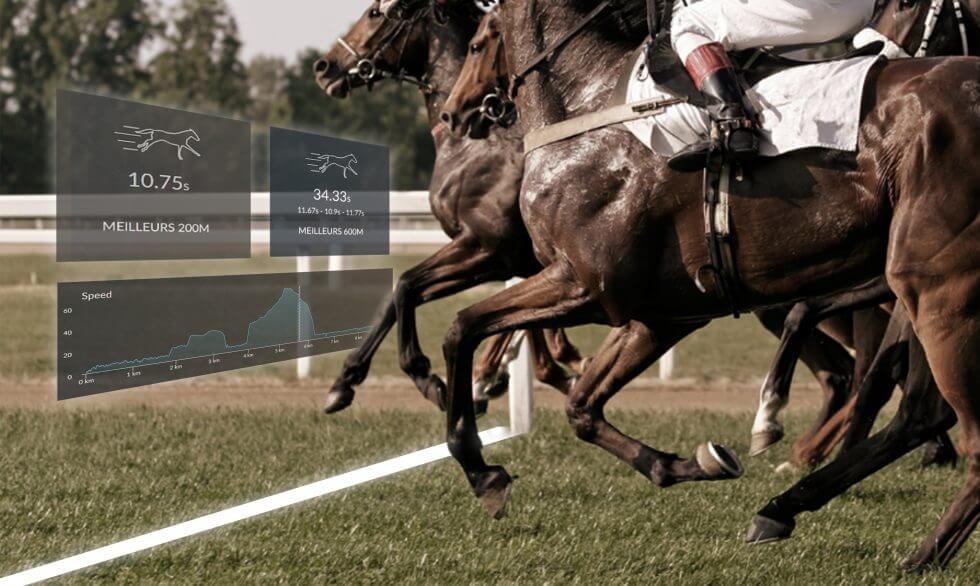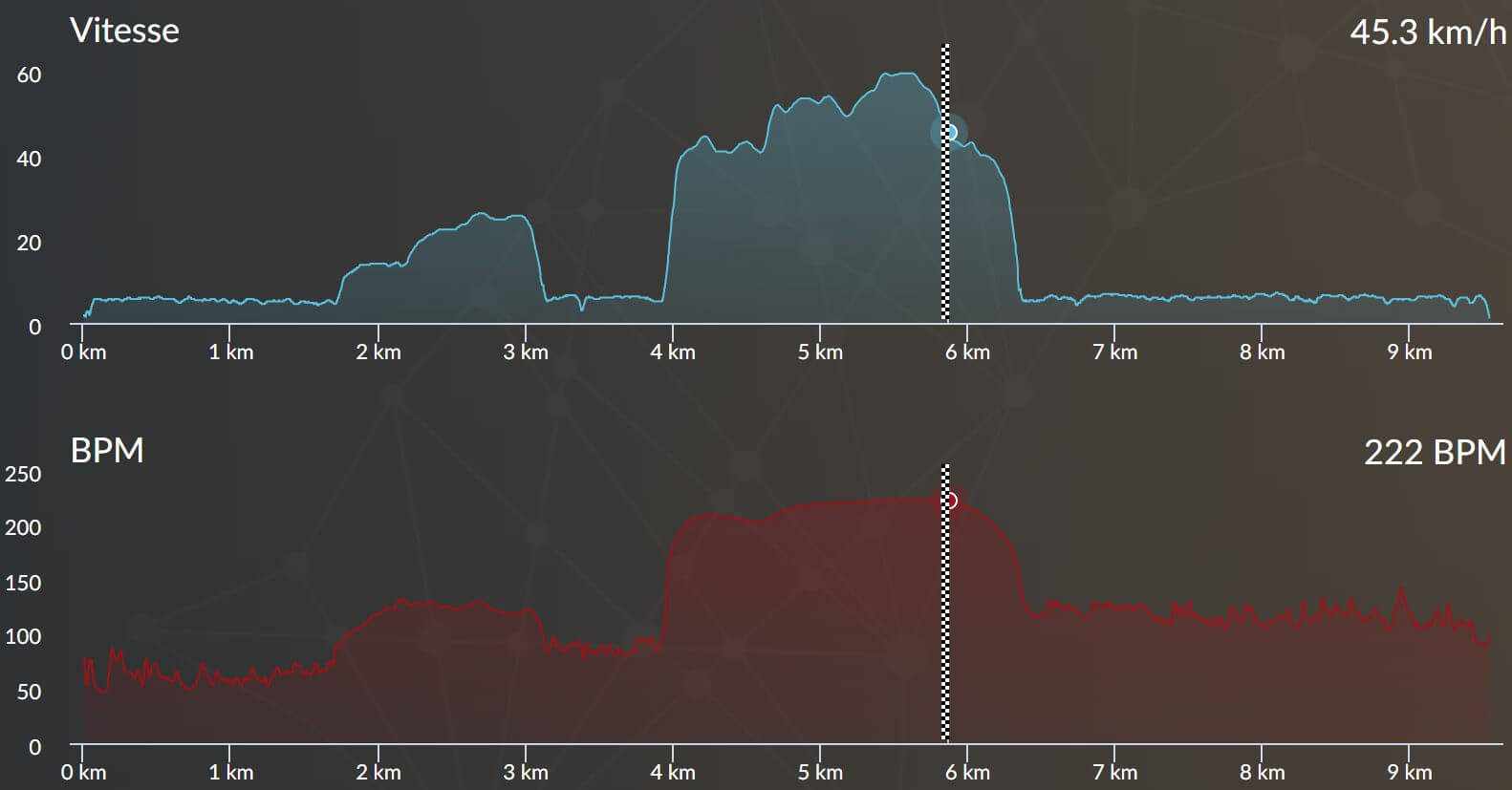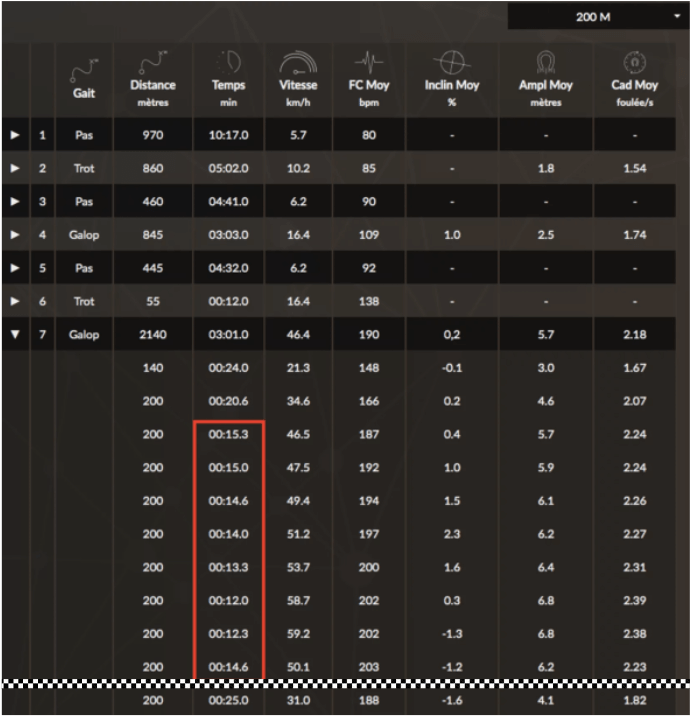In a race, the most important thing is to cross the finish line first. At the racetrack, this finish line is materialized and both the horse and jockey have it in their sight for the last few meters. Racehorses tend to accelerate at the sight of this line. It is during the last few hundred meters that the jockey asks his horse for a higher intensity effort. It is therefore necessary to make the horses, especially the younger ones, aware of this finish line. Discover 7 good reasons to train with a finish line.
1. Repeat the final sprint gesture
Racehorses get excited on the way to the training track or back to the stables. This excitement and energy comes from a rooted habit in the horse. It is possible to create the same excitement in the final straight line of a track or racecourse. Regular work with a finish line in training helps to repeat this gesture. By using it regularly, the horses know when the final acceleration is coming and when to deliver a very high intensity effort.
For horses working only in circle tracks, the finish line is also a good way to create race conditions for the jockey, trainer and horse. It can be used to embody a finish and therefore simulate a final sprint.
2. Standardize the values of your training and keep track of evolutions
Working with an identical finish line allows you to compare the performances of several horses. The finish line offers an objective quantification of the horses’ performance in training over the last 600 or 200 meters. Trainers can therefore compare the results of his different horses in strictly equal conditions.
Example – Comparison between two horses
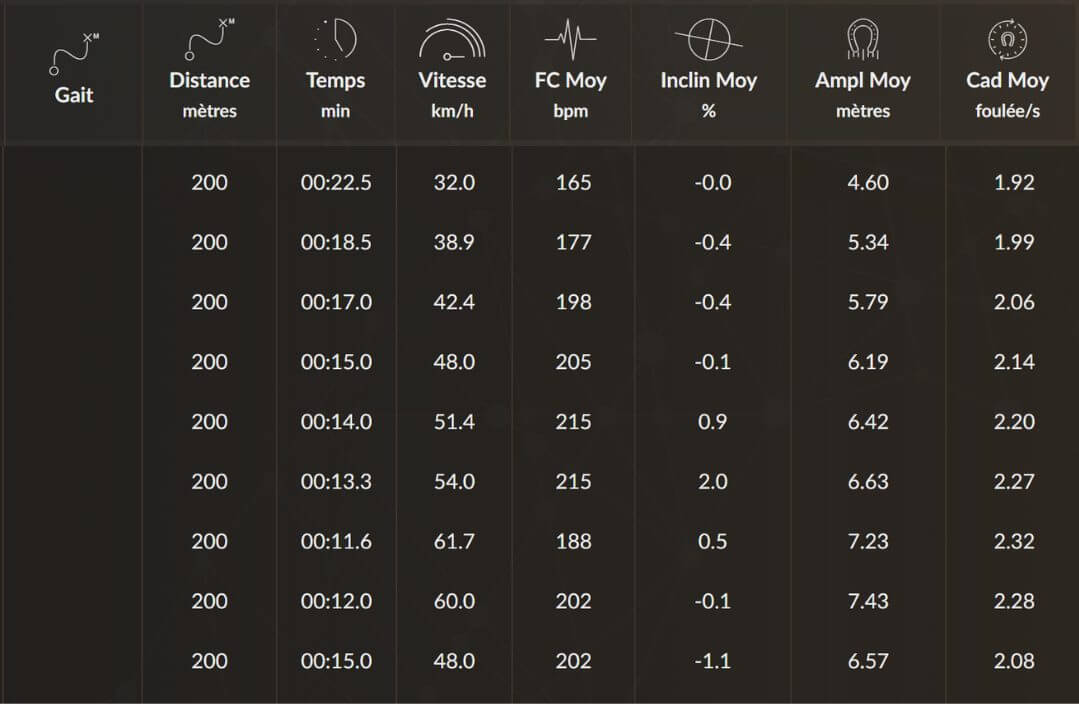
Arion I
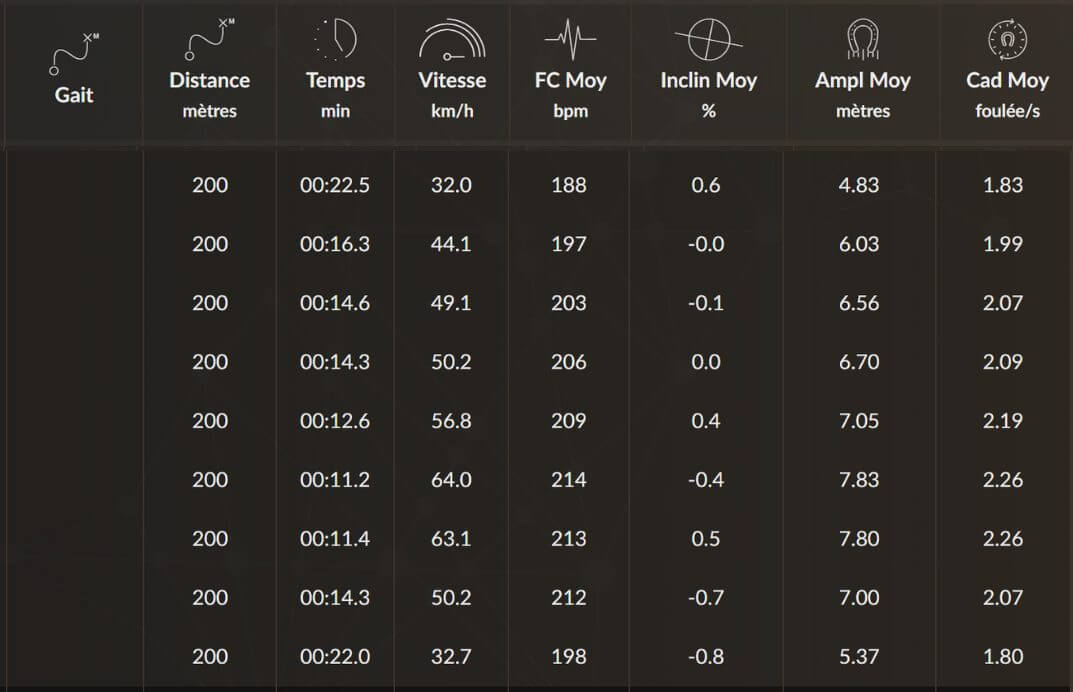
Arion II
In this example from the EQUIMETRE analysis platform, the data shows a difference between the performance of Arion I and Arion II, which trained in the same batch. On average, Arion II went faster than Arion I. Furthermore, Arion II’s fastest 200 meters were run in 11.02 seconds, whereas Arion I’s best time was 11.06 seconds. This suggests that Arion II has slightly better speed skills than Arion I.
In addition, a trainer can also compare a horse’s performance with his previous performances. Over the course of a season, or even a horse’s career, the finish line provides valuable consistency of data. A horse’s performance at the beginning of the season on a finish line can therefore become a benchmark for monitoring his progress over the course of training. It can also guide a trainer’s decision when making race entries.
3. Check cardio status
Once the finish line is crossed, the speed drops sharply and rapidly. Logically, a horse with a good fitness will see his heart rate decrease as his speed does. Conversely, if the heart rate curve (in BPM) does not decrease or decreases only slightly once the speed has decreased, then this may show a poor fitness. This means that the horse is not recovering quickly enough from the effort he has made. The finish line is therefore a tool that, when paired with the ECG, can be used to quantify and analyse a horse’s recovery from an intense effort.
Data from the EQUIMETRE platform
Once the finish line is crossed, the speed and the beats per minute (BPM) of the horse being monitored decrease. The horse’s BPM drops from 222 BPM at the finish line to about 100 BPM after 500 meters. Then, while the horse is at the recovery pace, at about 5km/h, the BPM also stabilises at around 100 BPM, a value close to the one at rest. Therefore, this indicates optimal recovery and a good fitness.
4. Understand how the effort is held by objectivising the speed aptitudes
The finish line is the end point of the sprint during training. Horses should therefore theoretically maintain their maximum speed until this predefined point. The finish line allows us to analyse a horse’s ability to sustain a given effort and to see when the horse reduces his pace. If he reduces his pace before the finish line, then the last acceleration was launched too early or too hard, because the horse was not able to maintain the intensity until the end. This simulates race conditions, allowing the horse to develop best practices on the final straight.
Data from the EQUIMETRE platform
This graph shows a premature drop in speed from the monitored horse. Around 700 meters before the finish line, he accelerates. Between the last 400 and 200 meters, the horse reaches his maximum speed and seems to maintain it. However, in the last 200 meters before the finish line, the horse’s speed decreases drastically, highlighting an unoptimal acceleration.
5. Objectivise the respect of the instructions by the riders
The finish line is the arrival point, after which the horses must slow down. Thus, they understand that this line symbolises the end of their high-intensity effort. Working with a finish line allows us to see if the horses are following the rider’s instructions by slowing down after this line.
James Peters told us that he usually works “over 800m and I get them to speed up for the last 400m. But the data showed that the horses were still galloping hard after the finish post. They were still doing the 200m in 12s after the line where I thought they had finished their work”. The efforts delivered by his horses were not the ones required, and therefore not optimised. He detected this anomaly thanks to the finish line and was able to change his working method from that point of view.
6. Prepare a race by comparing with real tracking data
With an objective quantification of the last 600 and 200 meters, the finish line allows the trainer to evaluate the preparation of a horse for a given race. This can help the trainer to better understand the race in relation to the horse’s capabilities. Again, tracking data provides valuable quantification to trainers when making race entries.
On average, at St Cloud racecourse, in 2000m races, on sticky to very heavy ground (depending on the weather), races are run with an average of 200m intervals run in 14.2s. This calculation was made using a sample of 20 races meeting all these conditions, based on data found on PMU.com.
From the performances hereabove, Arion is theoretically ready to win a race in St Cloud. Indeed, if we take into account his 8 last 200 meters, they were covered at an average of 13.8 seconds per 200m. This average is lower than the average recorded in the St Cloud race. While on paper the horse looks capable of being a contender for victory in St Cloud, it is important to remember that each race is unique and the performance of racehorses can be unpredictable.
7. Compare finishes on different tracks
The finish line can be used on any track to highlight differences in performance depending on the terrain. A horse tends to go faster on a grass track than on a sand track. However, perhaps some horses are more affected by the change of track than others. Similarly, some of the last 600 or 200 meters contain turns and others do not. By comparing the 600 meters before a finish line with and without turns, it is then possible to quantify the loss. Some horses slow down more than others on a bend, and are therefore at a disadvantage in a race that contains several bends.
Key words: racehorse speed, finish line, live tracking, last 600m, last 200m, maximum racehorse speed, high intensity effort

